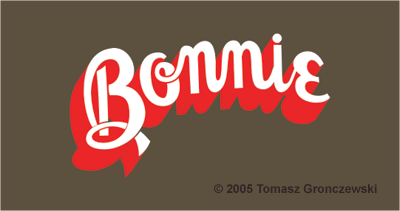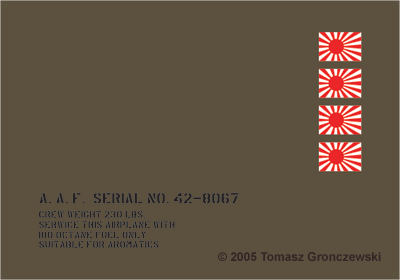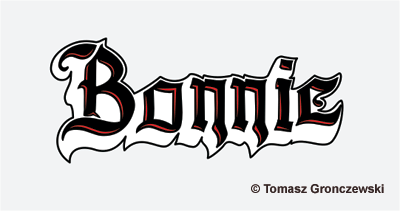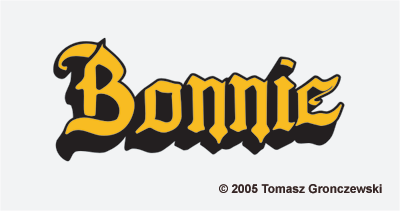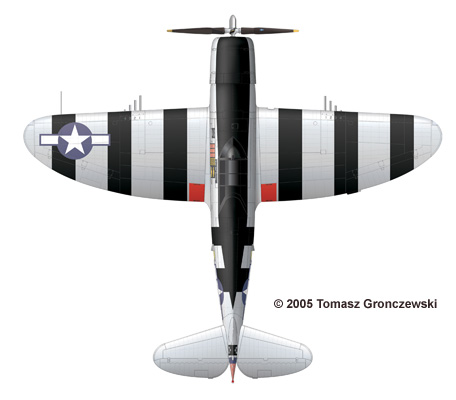Camouflage & Markings
by Tomasz Gronczewski
William D. ”Bill” Dunham was the second leading ace of the 348th Fighter Group, and the second leading Thunderbolt ace fighting against Japan. He scored 15 out of his 16 victories while flying P-47s. Also, Dunham’s P-47D-23-RA due to its fancy look belongs to the most often modelled Thunderbolts. Its popularity owes much to Don Greer, who selected that aircraft as a subject of the cover art for Squadron’s Thunderbolt In Action. Don Greer’s painting was used as a reference by Superscale for their decals in 1/48 (48-368) and 1/72. Later, Aeromaster re-did the markings, in their set no. 48-029 Pacific P-47D Thunderbolts.
Unfortunately for modellers, neither Don Greer, nor Aeromaster made their artworks correctly. Don’s painting is still very attractive but suffers from numerous inaccuracies (especially totally wrong shape of the noseart). As SuperScale followed Don Greer, they copied all the errors and mistakes the artist had done.
Aeromaster tried to apply some corrections, but instead of improving situation made it even worse as it simply mismatched two different Dunham’s aircraft.
This article is supposed to clarify current knowledge about the three of Dunham’s Thunderbolts.
P-47D-2-RE s/n 42-8067
The first Dunham’s victories were scored with 342nd Fighter Squadron in October 1943 over New Guinea while flying P-47D-2. Those times he was assigned with a P-47D-2-RE no. 42-8067 ”68” nicknamed ”Bonnie”. The profile shown below depicts ”Bonnie” as she looked like after October 21st 1943, when Dunham had four victories to his credit. In December 1943 Dunham would add three more kills while flying a P-47D-2.
The P-47D-2 42-8067 carried a typical plain but well-worn Olive Drab finish. It sported white theatre markings consisting of white tail and white wing leading edges. The location and angle of the extent of white on the tail is conjectural as there was no standard, and no photos showing the rear part of Dunham’s original ”Bonnie” have surfaced. Most Group’s P-47D-2s had the colour demarcation similar to this on the profile, but for example Kearby’s P-47D had the division more slanted. What is certain is that the white wing leading edges were rather narrow on Dunham’s 42-8067.
Since July 1943 US aircraft had to carry new national insignia with stars and bars surrounded with thin red outline. 5th Air Force refused to use red and added white bars only. Though in September 1943 new insignia with blue outline was introduced, apparently the old intermediate stars and bars were still seen on 348th Group’s Thunderbolts.
The exact colours of the ”Bonnie” nose art are yet to be confirmed. The name appears to be white with darker shadow. The shadow is too light to be black, thus it is shown here as red.
The photos show this aircraft with four victory marks, thus as it looked after October 21st 1943. I have not find any photo of this aircraft with marks for all seven victories. Though there are photos of the Dunham’s plane with seven Japanese flags, but the visible part of the serial number discloses that it was a different aircraft. Note that the plane’s information table lacks two uppermost rows i.e. ”project no.” and production batch descriptors. Also it appears that the pilot’s name has not been painted anywhere on the plane.
Dunham’s all subsequent aircraft while his service with 342nd FS remain unknown. As it is written above, there are some photos of the aircraft with seven Japanese flags, but its identity is still not known.
P-47D-21-RE s/n 42-25414
At the beginning of Dunham’s duty as the commander of newly formed 460th Figher Squadron, he was assigned with a P-47D-21-RE s/n 42-25414. On November 1944, during Philippines campaign, Dunham used this aircraft to score his ninth kill – a Zero 32 over the ocean West of Camotes Island.
P-47D-21-RE s/n 42-25414 left Farmingdale in natural metal finish. According to the 348th FG’s fashion its anti glare panel was extended to the canopy and to the spine. It is uncertain what color was used to extend the anti glare panel, but at the photos it looked just a little bit too light to interprete is as black. Hence I decided to portray entire upper fuselage as Olive Drab.
The tail markings of this aircraft are totally conjectural. I have just assumed that the tail markings were similar to those seen on Dunham’s P-47D-23-RA.
Black ”Bonnie” with white shadow and thin black outline probably inspired Aeromaster artists, but was painted definitely on the earlier D-21-RE not on subsequent D-23-RA. Note that the letters had some sort of highlight on the bottom edges. I assumed red, but it might have been any other medium-dark colour.
The same style of lettering was used in nose art on many other NMF P-47Ds of the 348th Fighter Group.
I have never seen any photo of the right side of any Dunham’s P-47, thus I don’t know if they carried Bonnie on the ”wrong side”. However most of the aircraft of the 348th Fighter Group had nose arts applied to both sides. Thus it is highly possible that Dunham’s Thunderbolt had either ”Bonnie” or another nose art painted on the right side of the cowling.
The rectangle with ground crew names was possibly black. I am not quite sure about the names, as neither photo I have seen shows them well enough. I may only suspect that the name of the crew chief was ”Neal”, but it might have been ”Heal” as well. It is intriguing that the very next of Dunham’s Thunderbolts had totally different ground crew.
The rectangle with the pilot’s name was apparently of dark colour, possibly black. It was outlined with thin oversized lines of lighter (red?) colour. The pilot’s name was white with subtly lighter (yellow?) shading.
The horizontal black line shown at the picture is a location of a panel line.
P-47D-23-RA s/n 42-27884
In late November or early December 1944 Dunham replaced the P-47D-21 with a new P-47D-23-RA s/n 42-27884. He used this aircraft to score five victories over the Philippines.
The new Jug had been left in natural metal finish as well and had anti-glare panel extended over the spine. It would appear that the original factory-applied antiglare panel was repainted with black.
The rudder was adorned with red stripes of pre-war style. Apparently no white was used, just red over unpainted metal skin with the blue leading edge. Also, the number ”120” on the black vertical stripe on the fin seems to be left in natural metal. Note the shape of the ”2”. Both Superscale and Aeromaster repeated its incorrect shape following Don Greer’s painting.
The name ”Bonnie” carried on P-47D-23 was applied using quite light (yellow?) color with black shadow. The shape of the letters resembles the former ”Bonnie” very much but there is no close-up photo, that would reveal details.
The large, bold and sophisticated scoreboard was one of 42-27884’s most distinguishing features. The colour of the ship kills and bomb marks is just darker than white. Aeromaster assumed light gray, I assumed yellow.
In late December 1944 Dunham’s P-47D-23-RA received new theatre markings consisting of two black bands around the fuselage and three black bands around each wing. The bands were fresh and had some semi-gloss sheen contrary to dead flat appearance of the anti-glare panel and the spine. The width of the front fuselage band was 22″. Rear band as well as all wing bands were 28″ wide
This well known but misinterpreted aircraft was Dunham’s last Thunderbolt. In January 1945 he returned to the States and attended gunnery school. He returned to his old group in May 1945 and scored his final victory a few months later. However by the time of his arrival 348th FG had already switched to P-51Ds.
For further reading I highly recommend John C. Stanaway’s book Kearby’s Thunferbolts published by Schiffer Books.
This article was originally published in IPMS Stockholms Magazine in August 2007

